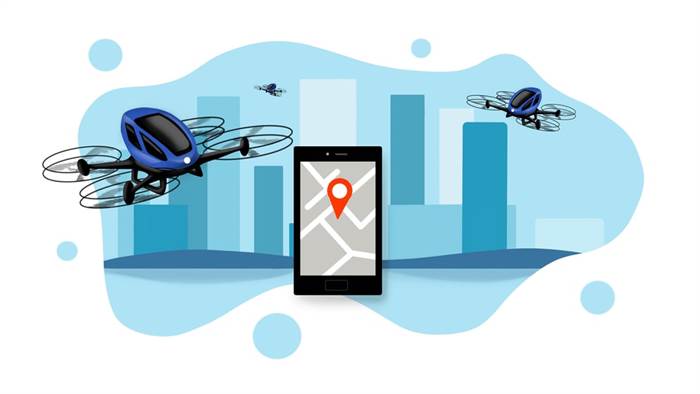Content
- Digital portfolio of products and services within an ecosystem of partners
- Let’s Travel Your Company into The Digital Future!
- A Guide to Sales Operations In 2023
- Enhanced security
- The shift from traditional to digital banking
- Greater innovation
- Advantages of Digital Transformation in Financial Services
The company employed chatbots for delivery updates, on-demand delivery so customers could schedule a delivery at a time that suits, and QR codes for easy returns. The quality control project uses big data to make predictive analyses on deliveries and shipments along with using AI and ML to enable the system to adapt and improve itself. In this article, we look at the workforce and business benefits of digital transformation and offer ways to help you get there faster. Further growth of the tax and accounting industry and continuous accounting as a trend is impossible without data analytics, which is also a big trend in the industry. Data analytics leverage AI and predictive analytics to solve a number of accounting challenges like financial reporting and forecasts, constant tax law, regulatory, and accounting standards changes, and so on.
- The varying speed and needs of customers have impacted various sectors and services differently.
- So the main goal of digital transformation is to use technology to improve the customer experience.
- Digitization in banking brings a lot of new opportunities for small and medium scale businesses, big corporations, and similar institutions.
- To keep up with the ever-changing market, traditional banks had to adapt to new technologies and operating models that could keep them in the loop throughout the entire customer’s journey.
- Central to this flexible and adaptable nature is creating and cultivating a strong digital culture.
- This article will introduce the importance of digital adoption in the banking industry.
Traditional players are being increasingly forced to modernize and digitize their business offerings in order to compete. Digital transformation can be defined as the integration of digital technology into all areas of a business, aimed at creating a more efficient and innovative organization. It involves the use of digital tools, processes, and mindsets to drive business success and achieve new levels of growth. A well-designed digital transformation strategy is an essential component of any innovation strategy. The traditional company simply produces and sells products according to what customers order. The transformed company, however, uses a steady flow of real-time data and insights on which products are being consumed, where and how quickly inventory is depleting.
Digital portfolio of products and services within an ecosystem of partners
Or, more often than not, champions can emerge organically during a company’s digital transformation, raising their hands and volunteering to help their colleagues. If you want to drive digital transformation in your finance business and don’t know where to start, talk to us. The change does not occur overnight, and C-level leaders must continually foster an environment where it is easy to embrace these initiatives.

“Transformation shifts entirely what you know about your customers,” said Andrew Binns, managing principal at Change Logic LLC. “And it shifts what kind of relationship you can form with customers. You can make them more intimate.” Digital technologies allow businesses to collect, store and analyze customer data so they can learn more about each of their customers. Companies can use data analysis and AI to gain greater insights, allowing them to create and offer products and services tailored to each customer’s unique preferences and needs. digital financial transformation But companies, nonprofits and governmental entities lagging in their digital initiatives struggled to adjust to the year’s rapidly changing economic and social environment. This means your audience would surely find your products or service more engaging or attractive than what your customers have to offer. Digital technology helps incorporate artificial intelligence, machine learning, advanced processing, and workflow automation which help organizations effectively meet the demands of customers along with more business objectives.
Let’s Travel Your Company into The Digital Future!
When taken as a whole, these findings demonstrate the widespread adoption of both AI and advanced analytics within the financial services sector — a trend that continues to grow with each passing year. Moreover, finance organizations are increasingly watchful of the cloud to reimagine digital interventions. Today’s cloud offers a promising destination for financial services to outsource their data storage and access advanced software applications.

Automated processes have the intelligence to know when to trigger new architecture or legacy services. The number of U.S. neobank customers rose to 20 million at the end of 2021, according to Insider Intelligence, and is projected to reach 39 million by 2025 (about 19% of the U.S. adult population). Considering the size and value, by 2028, the North American digital banking market will be worth $600 billion¹. A study carried out by Google and Boston Consulting Group revealed that banks are achieving 20% revenue increases and up to 30% cost savings after their first phase of digital transformation. The Internet of things has transformed the financial ecosystem by introducing risk management, authorization processes , and access to multiple platforms.
A Guide to Sales Operations In 2023
Capital market firms can make faster, smarter trade decisions based on sophisticated analyses of past market performance data. Organizations can conduct customer sentiment and mood analyses and personalize customer experiences based on individual customer profiles—such as suggesting customized portfolio solutions based on each individual’s risk appetite. All businesses want to cut costs, but financial services companies are especially feeling the pressure to tighten their belts. Optimizing business efficiencies and operations across the supply chain is financial services organizations’ top digital priority .
The use of automation and machine learning in the finance function has truly revolutionized the way CFOs approach financial data analysis. With these cutting-edge technologies, finance teams can make better decisions faster, which can ultimately drive business growth. Ranging from marketing and sales to finance and HR, every field of an organization possesses sensitive data. Hence it becomes essential to secure and optimize that data wherever it flows while keeping the working process easier for the team so that finishing a particular job can not be too complex and time-consuming.
Enhanced security
With instant online payment, every customer and business can operate hassle-free. The expansion of digital banking has resulted in reduced intermediate processes, data transparency and substitute methods to access intellectual data. All of these factors positively impact the operation costs and make transactions easier and faster.
Digital transformation in financial services companies has a proven track record of adapting businesses to the challenges of an ever-changing marketplace. Like most industries, banking is undergoing a powerful digital transition that shows no signs of slowing down. Financial institutions must explore the benefits of digital transformation in banking to create a plan to help meet evolving customer expectations. In today’s banking and financial services industries, mergers and acquisitions are near commonplace. The more information any management team can collect, the better they can make solid decisions. The most critical choices are data-driven, and digitalization helps financial institutions make those tough (but well-informed) calls based on accurate and real-time data that best meets customer needs.
The shift from traditional to digital banking
According to Boston Consulting Group, only 30 percent of companies navigate a digital transformation successfully. And it’s only going to get harder as digital technologies keep evolving and customers will leave behind brands that don’t operate online – whether that’s for customer service or ecommerce. Now that we understand the major drivers https://globalcloudteam.com/ behind the digital transformation in financial services, it’s time to dive deeper into the trends that disrupted the industry. But an even greater shift happened in the way financial institutions collaborated with each other. This type of partnership can include startups, financial institutions, investors, and government initiatives.
